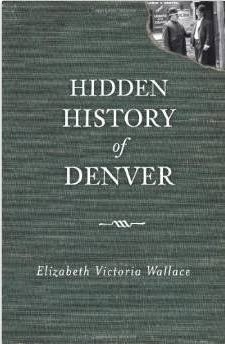
There is perhaps not one home in America that has not at one time had Tollhouse cookies or M&M candies in the cupboard for a snack or treat. These products came from entrepreneurial people who saw the need for a different kind of treat, but one came from a culinary mistake.
Take for example the Tollhouse cookie. In 1933, Ruth Graves Wakefield, who owned an inn in Whitman, Massachusetts, decided to make a different version of her butter cookies for her residents by adding some chopped chocolate. She believed the chocolate pieces would melt during cooking but unfortunately, the chocolate stayed intact. Not wanting to waste the batch of cookies, she served them to her patrons who were delighted with this new version to the old recipe. Whitman was pleased that by accident she had discovered a new type of cookie to add to her repertoire. Being a good business woman, Whitman knew a name was needed for her new creation, and she decided on Tollhouse Cookies since her inn was originally located on the tollgate road to Boston. In 1939, the Nestle Company packaged the chocolate chips and introduced them to consumers.
The candy famously represented by the slogan “The candy that melts in your mouth, not in your hand” was developed in 1941, and was sold mostly to the armed forces during WWII. The concept for this candy originated (although it cannot be confirmed) by Mr. Forrest E. Mars who said he saw soldiers during the Spanish Civil War eating a kind of chocolate capsule or tablet that had been encased in a sugary substance.
Once back home, Mars went to work in his kitchen and soon invented the recipe we know today as M&M plain chocolate candies. The candy was originally targeted towards military personnel overseas because it did not melt regardless of high temperature environments, and therefore made a convenient snack for soldiers. By the late 1940s, the packaging changed and so did the recipients. The original container had been a colorful tube, but now changed to a brown pouch, much as we see it today. The product was offered to the general public who were delighted with the crunchy candy. The initials M&M stand for Forrest Mars and Bruce E. Murrie who helped develop the delicious treat.
Take for example the Tollhouse cookie. In 1933, Ruth Graves Wakefield, who owned an inn in Whitman, Massachusetts, decided to make a different version of her butter cookies for her residents by adding some chopped chocolate. She believed the chocolate pieces would melt during cooking but unfortunately, the chocolate stayed intact. Not wanting to waste the batch of cookies, she served them to her patrons who were delighted with this new version to the old recipe. Whitman was pleased that by accident she had discovered a new type of cookie to add to her repertoire. Being a good business woman, Whitman knew a name was needed for her new creation, and she decided on Tollhouse Cookies since her inn was originally located on the tollgate road to Boston. In 1939, the Nestle Company packaged the chocolate chips and introduced them to consumers.
The candy famously represented by the slogan “The candy that melts in your mouth, not in your hand” was developed in 1941, and was sold mostly to the armed forces during WWII. The concept for this candy originated (although it cannot be confirmed) by Mr. Forrest E. Mars who said he saw soldiers during the Spanish Civil War eating a kind of chocolate capsule or tablet that had been encased in a sugary substance.
Once back home, Mars went to work in his kitchen and soon invented the recipe we know today as M&M plain chocolate candies. The candy was originally targeted towards military personnel overseas because it did not melt regardless of high temperature environments, and therefore made a convenient snack for soldiers. By the late 1940s, the packaging changed and so did the recipients. The original container had been a colorful tube, but now changed to a brown pouch, much as we see it today. The product was offered to the general public who were delighted with the crunchy candy. The initials M&M stand for Forrest Mars and Bruce E. Murrie who helped develop the delicious treat.








